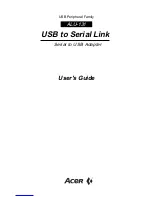
MIB Descriptions
C-18
7610-A2-GB20-00
November 1996
Enterprise MIB Objects
The following lists the Paradyne Enterpris specific MIB Objects supported by the
unit.
Device Configuration Variable (pdn-common 7)
The variable devConfigAreaCopy in the devConfigArea group is supported. This
variable allows the entire contents of one configuration area to be copied into
another configuration area. The unit only supports the following values.
Table C-13.
Device Configuration Variable
Object
Description
Setting/Contents
devConfig
AreaCopy
A “get” of this object will always return noOp.
noOp(1)
g
AreaCopy
Copy from active area to customer 1 area.
active-to-customer1(2)
Copy from active area to customer 2 area.
active-to-customer2(3)
Copy from customer 1 area to active area.
customer1-to-active(4)
Copy from customer 1 area to customer 2
area.
customer1-to-customer2(5)
Copy from customer 2 area to active area.
customer2-to-active(6)
Copy from customer 2 area to customer 1
area.
customer2-to-customer1(7)
Copy from factory area to active area. There
is only one factory area for the unit.
factory1-to-active(8)
Copy from factory area to customer 1 area.
factory1-to-customer1(9)
Copy from factory area to customer 2 area.
factory1-to-customer2(10)
Port Usage Table, pdn-devPortUsage (pdn-interfaces 3)
The Port Usage Table specifies whether the Management port is configured for
ASCII alarms, as an SNMP management link, or is disabled. Supports the values
alarm(1), netLink(3), and none(5).
DDS Interface Specific Definitions, pdn-dds (pdn-interfaces 2)
The DDS Interface Specific Definitions contain objects that are used to manage
the DDS Network Interface. Fully supported by the unit.
Device Security, pdn-security (pdn-common 8)
Use the Device Security table to control the number of SNMP managers that may
access the unit, as well as the unit access level (read or read/write). Fully
supported by the unit.
Device Traps, pdn-traps (pdn-common 9)
Controls the SNMP managers to which the unit reports traps. Fully supported by
the unit.
Device Control, pdn-control (pdn-common 10)
Uses the devControlReset object to reset the unit. Fully supported by the unit.
















































